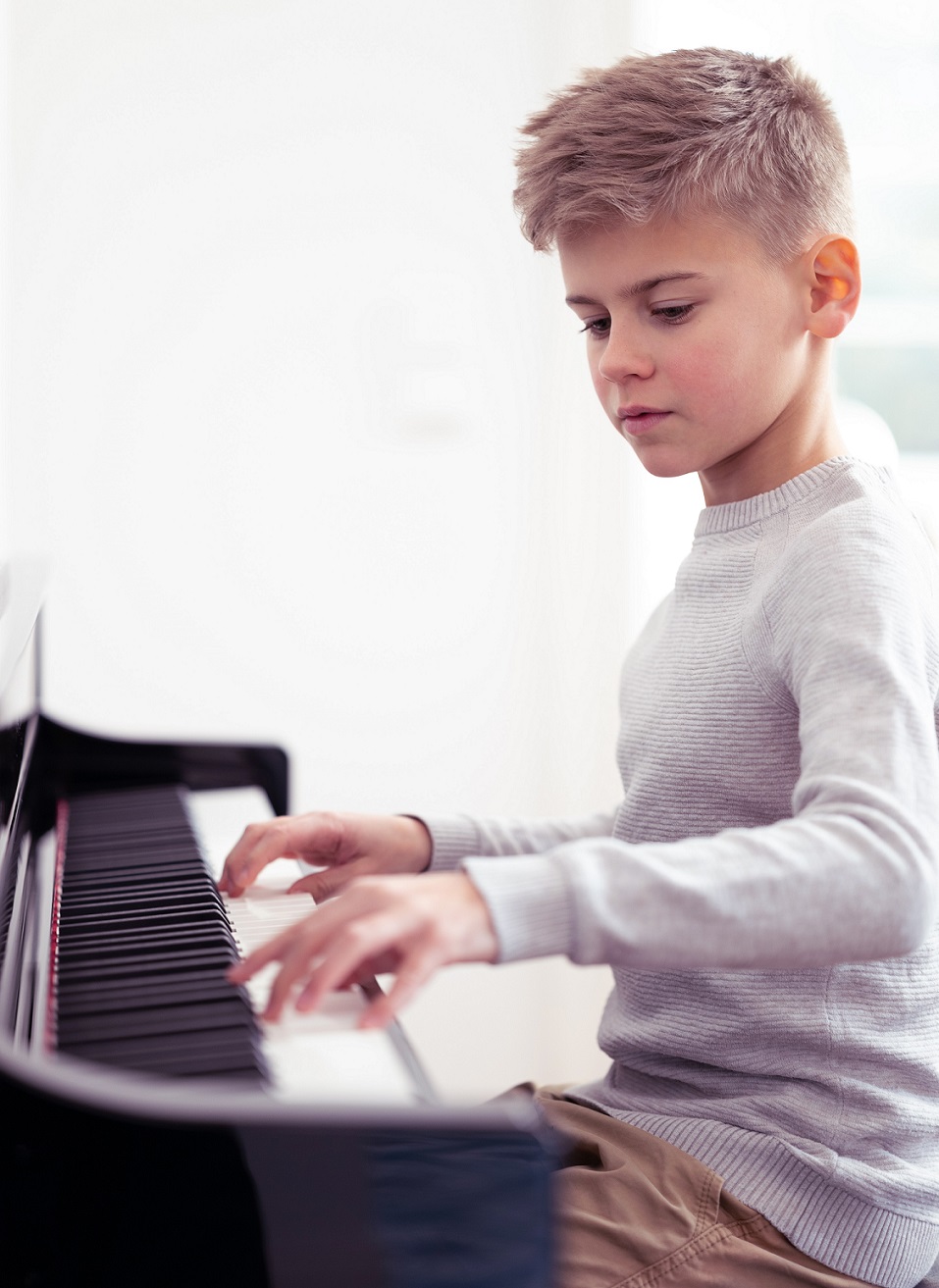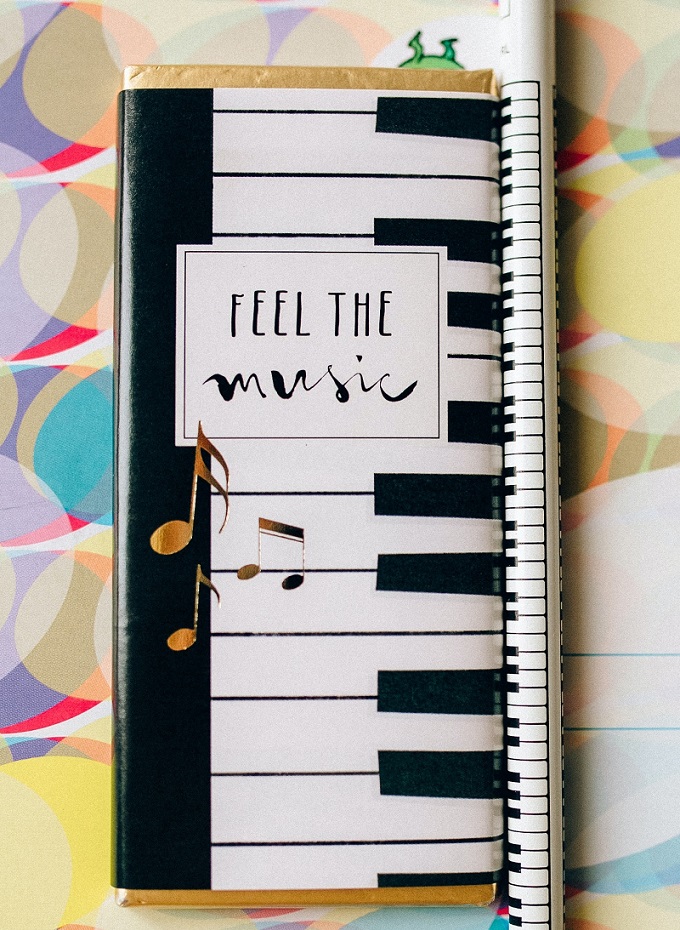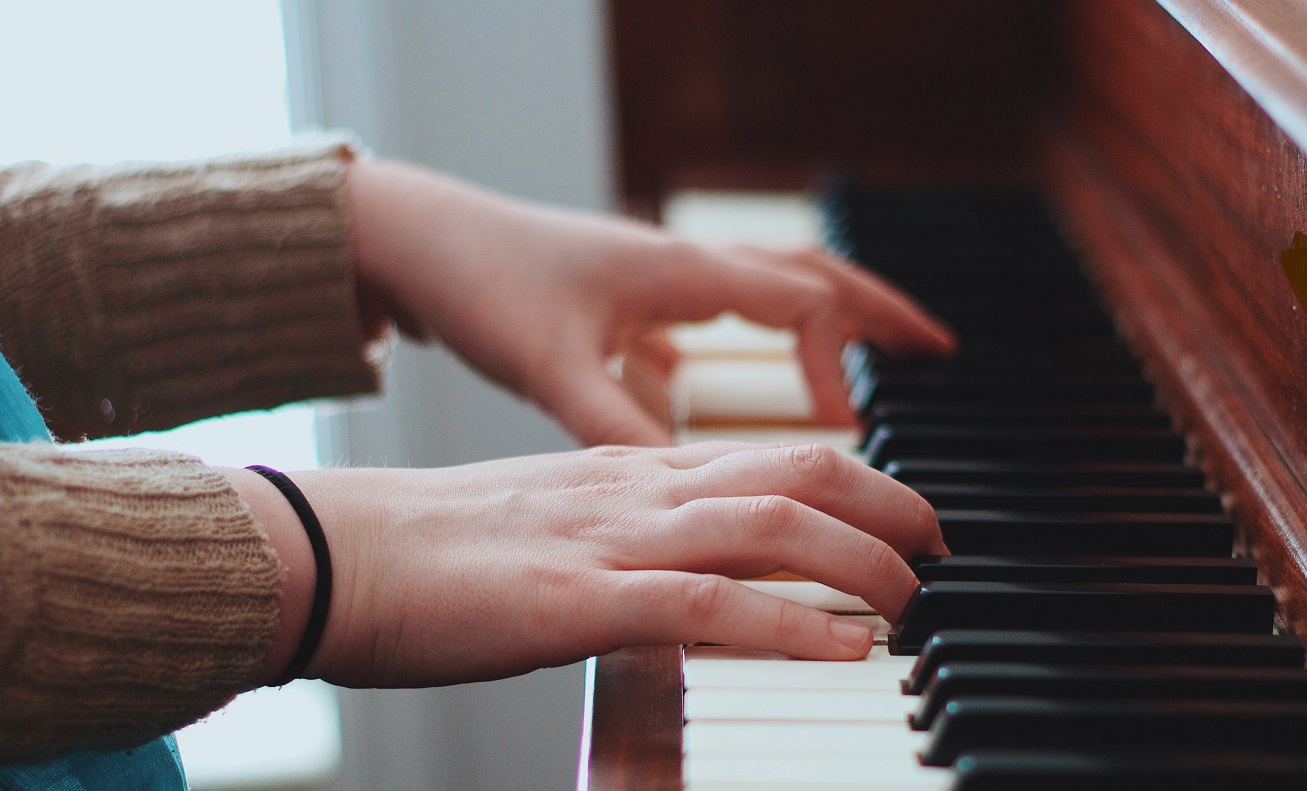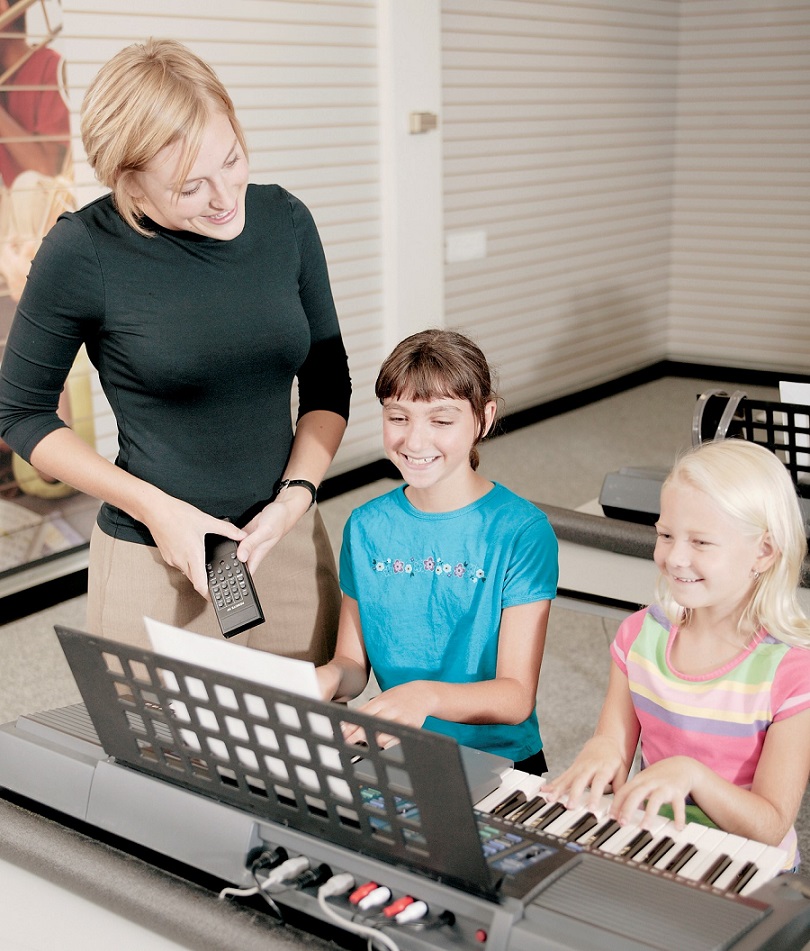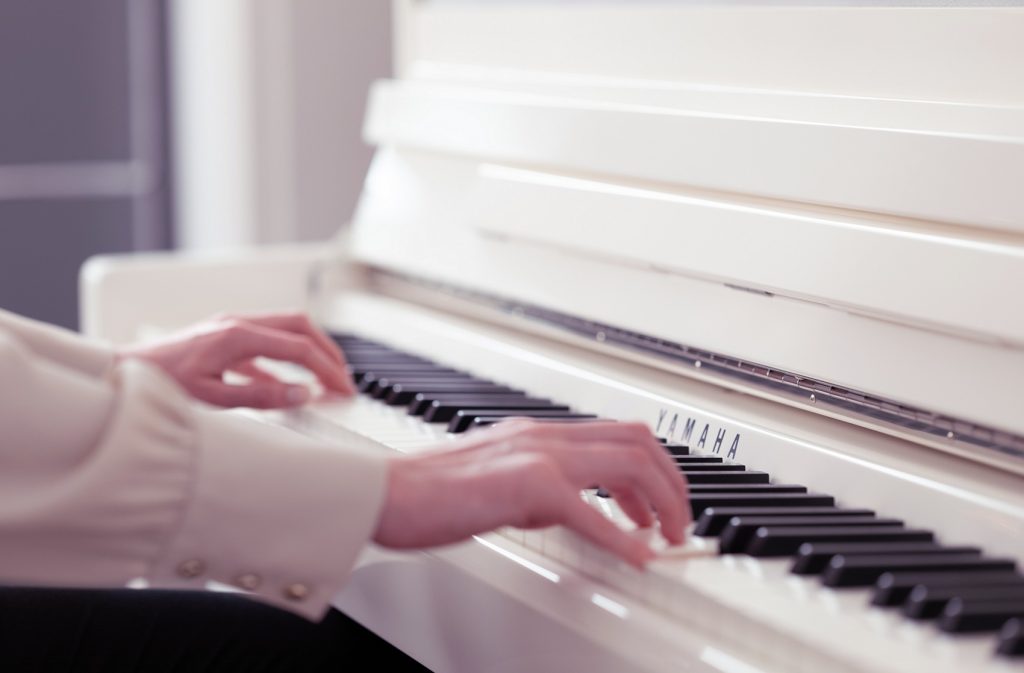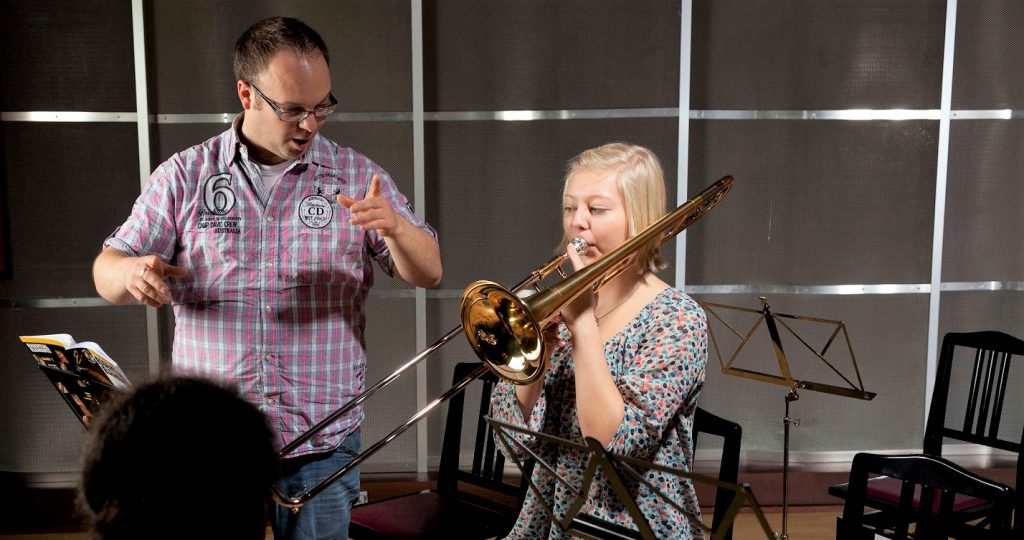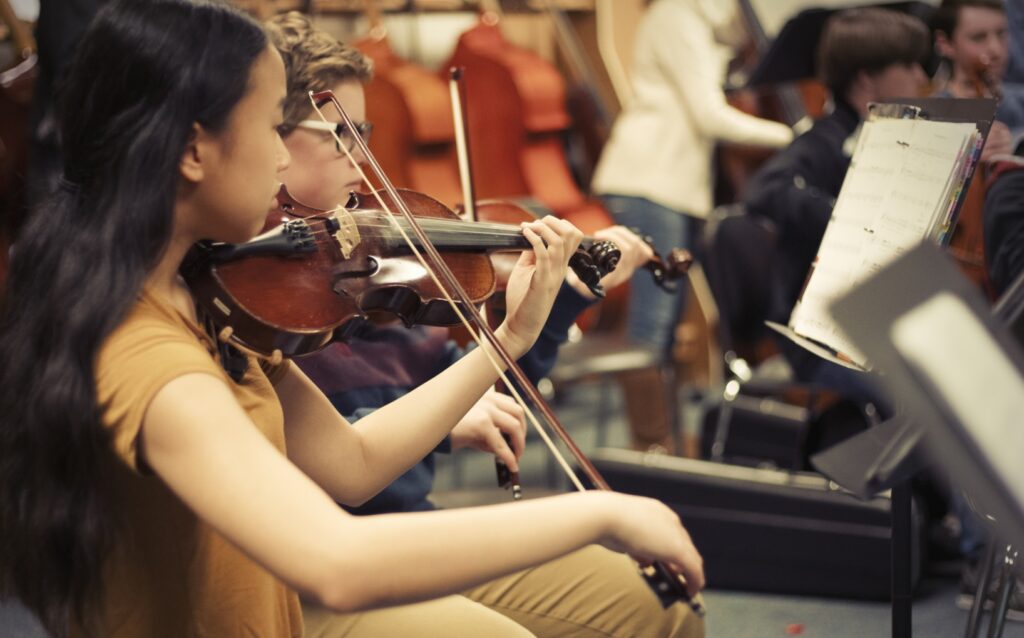Tagged Under:
12 Practice Tips, Suggestions and Strategies
Try these practical practice guidelines to help students develop as performing pianists.
We have looked at “The Different Types of Practice” and “The Teacher’s Role in Developing Good Practice Habits.” Now, I would like to share some practical guidelines that have benefitted my students in their development as performing pianists.
1. Make it Harder
One main principle that governs my philosophy on practice is “make it harder (to make it easier).” If a passage contains difficult leaps, making the leaps harder by placing them farther apart on the keyboard, or playing them with eyes closed can actually make the original leaps feel easier to navigate and play. Similarly, a one-octave, double-note chromatic third passage could be turned into a two-, three- or four-octave passage instead. A tricky passage over the keys could be transposed to feel even more awkward and uncomfortable in the new key. In these ways, the original passage or technical hurdle will come to feel and be easier, and mastery can be achieved.
2. Repeat with Variety
Another principle I advocate when practicing is “repetition with variety.” Mindless repetition can become unproductive or worse, reinforce permanent bad habits or inaccuracy. Constantly varying the strategy or procedure utilizing variable practice invites mental stimulation and engagement. As such, my students and I try to come up with as many conceivable ways to practice a given passage or piece as possible. When drilling a piece for technical surety, for example, a student can vary the procedure in innumerable ways, including playing in different rhythmic patterns, with various rhythmic accents or in assorted rhythmic groupings. Certain notes can be played repeated, passages can be played backward and forward, with hands reversed, etc.
Below are 10 additional practice tips and strategies that were originally included in an article I wrote for the California Music Teacher, which I have revised and updated here.
3. Set a Goal for Each Practice Session
According to Anastasia Tsioulcas in her article, “10 Easy Ways to Optimize Your Music Practice,” practice sessions are often more effective when the player sets out with a specific goal in mind. Pianists can accomplish a great deal more in less time if the session is focused on achieving a particular objective. This can be as simple as aiming to learn a certain number of measures of music or being able to play a target passage at a specific tempo. In my own experience, I am able to accomplish far more during my practice time if I begin with a goal in mind. Even a short 5- or 10-minute practice period can be effectual when approached in this way.
4. Use Post-it Notes for Reminders and Distracting Thoughts
It is easier than ever to become distracted while practicing. Thoughts about homework, daily chores, etc. can become all-consuming and curb students’ ability to focus. As a result, the quality of their practice is negatively affected. Jotting down a reminder on a Post-it or notepad can help them keep their mind free of distractions so they can concentrate on the material at hand. I borrowed this idea from Robert Pace in his article “Productive Practicing.”
5. Keep a Practice Journal
A practice journal can help bring about greater awareness with regard to practice habits and tendencies. Regularly journaling, with student reflection and teacher discussion and oversight, can help students develop better practice routines and more effective practice habits in general. This journal can complement a practice record book, or both items can be merged into a single practice resource.
6. Utilize Score Study and Mental Practice
Incorporating mental practice in which students spend time studying the works they are playing away from the piano can be enormously beneficial for successful learning to occur, according to Tsioulcas. As discussed in my article “The Different Types of Practice,” mental practice, including visualization techniques, can aid in the process of learning music at and away from the instrument, as well as memorizing music and preparing for performances.
In addition, Pace explains how score study is invaluable to the learning process when students utilize some initial score study prior to trying to play a new piece at the keyboard. Students develop their inner ear and begin to acquire important analytical skills in this way.
7. Avoid Hands-Separate Learning
This point is slightly contentious as hands-separate learning is so ubiquitous and a go-to learning and practice strategy at the elementary level for many teachers. Hands-separate and voice-separate practice, especially in contrapuntal works, are two indispensable practice tools for pianists. This kind of practice allows pianists to focus on one hand or part at a time and listen intently and fully comprehend what each is doing.
Hands-separate learning is another matter entirely. When students always learn their pieces in this way, they do not conceive and understand the two parts together as a whole. Furthermore, their visual modality is diminished because they become used to focusing on only a single staff of music at any given time. In my experience, this leads to poor sight-reading ability at the piano and should therefore be used sparingly and avoided as the default strategy for learning all piano music.
8. Add Musical Details as Early as Possible
Many students practice the notes and rhythms of a piece divorced from the musical expression. Similar to hands-separate learning, such practicing leads to a compartmentalized understanding of music. Based on research by Robert Duke, Amy Simmons and Carla Davis Cash in “It’s Not How Much; It’s How: Characteristics of Practice Behavior and Retention of Performance Skills” (and rearticulated in Noa Kageyama’s article “8 Things Top Practicers Do Differently”), the sooner students are able to observe and internalize musical details such as dynamic markings in the learning process, the more efficient and effective their practice will be. Teachers might encourage their students to instill a habit of observing more of the musical details in their learning by assigning a new quick study to their students at every lesson. Such a piece should be two to three levels below the student’s other repertoire in difficulty. As such, students should be charged with learning these pieces independently with the aim of preparing them to the highest artistic level.
9. Tackle and Correct Errors Immediately
Many students expect to make errors and spend much of their time fixing learned mistakes. Mistakes are simply bad habits repeated over and over. In their research, Duke, Simmons and Cash showed that the best practicers were the ones who played with the least amount of inaccuracy and who addressed and corrected errors immediately. In reference to this study, Kageyama states that “strategically slowing things down” is the most impactful strategy for achieving absolute accuracy.
In my studio, we often talk about Cora Ahren’s and G.D. Atkinson’s idea of “making haste slowly” (see page 49 of their 1955 book, “For All Piano Teachers”) just like the slow and steady tortoise in Aesop’s famous fable who was able to beat the agile but undisciplined hare.
10. Repeat Target Passages with Variation Until Errors are Corrected, then Practice in Context
Focused repetition of targeted passages is an important element of practice. It helps to build neural pathways and develop muscular reflexes and responses. Mindless repetition is less effective and can actually do more harm than good when bad habits are reinforced during reiterations of a target passage. Repeating a target passage, or what I call a “bite-size chunk,” and utilizing variable practice so that some aspect of the music such as the rhythm, tempo, articulation, direction, metric accent, etc., is varied can be highly effectual. In this way, the mind must engage to ensure each variance is accurate, while the muscle memory is solidified through repetition. It is then important to put bite-size chunks together and practice these targeted passages in context.
11. Practice at a Variety of Tempi
Many pianists practice their repertoire at concert tempo, as well as under tempo. Slow, mindful practice, or what I call “slow-motion practice” or “tortoise tempo practice,” in which all musical details are heightened in a much slower tempo can help to secure a piece as it allows for careful listening and engagement to take place. However, pianists would do well to develop the technical and listening skills needed to be able to play repertoire with mastery at a variety of tempi including: very slow, slow, slightly under tempo, at tempo, a little faster than tempo and much faster than tempo.
12. Take Advantage of Technology
I agree with Anastasia Tsioulcas that technology can be a wonderful practice aid. There are all kinds of apps that can assist pianists during practice sessions from metronome apps, to apps that can slow down or speed up YouTube clips or MP3 files, to online practice logs and journals. It should also be noted, however, that technology is able to severely disrupt practice sessions. Text messages and other alerts are distracting and break students’ focus. Pianists might do well to place their phones on “do not disturb” or in airplane mode when practicing. Some of my students have now moved to using old-fashioned metronomes instead of a metronome app with this in mind.
For a useful list of additional practice tips and suggestions, take a look at “Hints on Practicing” on page 2 of Tankard and Harrison’s book of technical exercises, “Pianoforte Technique on an Hour a Day,” as well as Ahrens and Atkinson’s “Fundamental Rules of Practice” on page 49 of “For All Piano Teachers.”
Sources and Resources
- Ahrens, Cora & G. D. Atkinson. “Practice Routine.” In “For All Piano Teachers,” 48-54.
- Duke, Robert, Simmons, Amy L., and Cash, Carla Davis. “It’s Not How Much; It’s How: Characteristics of Practice Behavior and Retention of Performance Skills.” Journal of Research in Music Education 56, no. 4, 2009: 310-21.
- Kageyama, Noa. “8 Things Top Practicers Do Differently,” The Creativity Post, March 11, 2015.
- Pace, Robert. “Productive Practicing,” Keys, Jan/Feb 1995: 1-3.
- Pierce, Stephen. “A Teaching Toolbox for Optimal Technique and Practice at the Piano.” In The California Music Teacher, Spring 2017, 8-11.
- Tankard, Geoffrey and Eric Harrison. “Pianoforte Technique on an Hour a Day.” London: Novello, 1960, 2.
- Tsioulcas, A. “10 Easy Ways to Optimize your Music Practice,” NPR Deceptive Cadence. Sept. 3, 2013.










